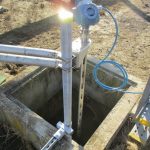To prevent accidents related to hazardous materials, it is essential for organisations to implement robust risk reduction measures in compliance with the main global standards that relate to overfill prevention. These are the IEC 61511 standard that sets out best safety practices for implementing a modern overfill prevention system (OPS) in the process industry, and the American Petroleum Institute’s API 2350 standard addressing best safety practices for non-pressurised above-ground large petroleum storage tanks. Both IEC 61511 and API 2350 recognise that a series of independent protection layers must be employed to minimise the risk of spills and leaks. The first of these layers is provided by the basic process control system (BPCS), which monitors and controls the production processes to ensure they are operating as they should. When the BPCS is functioning correctly, there is no need for any of the other protection layers to become active. However, should there be a failure or problem with the BPCS, then the OPS – which forms the second layer of protection – should prevent an overfill from occurring. To provide redundancy, the OPS must remain separate and independent from the BPCS. In instances where both these first two layers of protection fail to prevent an overfill from causing spillage, or where tank damage results in a leak, a third layer of protection is provided by a containment area, the purpose of which is to minimise the consequences of the incident. This containment area is typically an underground pit or dyke that surrounds the tank, providing a space into which spilled liquid can accumulate. In the highly unlikely event that all three of these protection layers would fail to prevent or contain an overfill and spillage, then the fourth and final layer of protection is to mitigate the consequences of the incident by alerting the emergency services.
Monitoring of containment areas
Containment areas have historically been monitored visually during manual inspection rounds. However, this method is not ideal, as it is time-consuming and involves workers being in hazardous areas of a facility. In addition, spills or leaks can go unnoticed for some time, which can not only delay any necessary repairs and clean-up activities, but also risks a vapour cloud spreading across the site and possibly igniting. IEC 61511 and API 2350 cover overfill prevention measures inside storage tanks, but when it comes to containment areas outside the tank, countries and local authorities often have their own codes of practice. The exact terms of these can vary, but they typically demand that a certain volume of liquid can be contained, and specify the materials from which the containment areas should be constructed. There is no regulatory requirement that level measurement devices must be installed to continuously monitor containment areas to detect spills and leaks. However, some companies recognise the valuable safety benefits that this provides.
Antwerp terminal
A global petrochemicals company wanted to deploy continuous level monitoring technology in containment areas around hydrocarbon storage tanks at its facility in Antwerp, Belgium, to strengthen its mitigation against the potential consequences of leaks. It was important for the solution to be highly reliable, but also capable of providing very quick detection of a leak or spill.
The specific characteristics of the application influenced the choice of measurement technology. Because the containment areas are open to the elements, rainwater can accumulate there as well as hydrocarbons. Basic point level detectors are unable to distinguish between the two liquids and are therefore unsuitable for this application. The solution had to be able to measure the full range of the containment area; to measure an interface between oil and water; and to detect hydrocarbons from a thickness of 60 mm. It also needed to be unaffected by the effects of weather and be able to operate reliably whether the area was dry, contained only one liquid (either water or hydrocarbon), or two liquids (water and hydrocarbon, requiring both level and interface measurements).
The company initially installed hydrocarbon detecting sensors, but discovered that these probes were not robust enough for the application, with regular short-circuits causing false fire alarms. This led the company to contact several leading automation technology vendors in a bid to find a more suitable monitoring technology. The company decided that the solution best able to meet the demands of the application was the one proposed by Emerson, and it purchased over forty of its Rosemount 5300 guided wave radar (GWR) level transmitters to monitor all the containment areas at the Antwerp facility. The installation also included a new WirelessHart network, with each area equipped with an Emerson Wireless 1410D gateway with 781 Field Link antenna, enabling the signal from the measurement points to go directly into the site’s existing distributed control system.
GWR technology is used widely both for BPCS and OPS, due to its reliability and accuracy. In level transmitters that use GWR technology, low energy microwave pulses are guided down a submerged probe. When the microwaves are reflected back to the transmitter from the surface, the level can be measured. Because a proportion of the emitted pulse continues down the probe, an interface can also be detected, which enables the technology to identify the presence of hydrocarbons as well as water in containment areas.
Detecting a thin hydrocarbon layer
An important aspect of this application is the ability to detect a very small amount of hydrocarbon sitting on top of a potentially larger amount of sitting rainwater. When GWR transmitters are used in interface level measurement applications such as this, the upper liquid layer historically has had to be between 50 and 200 mm thick (depending on the liquid properties and antenna selection) to enable the device to distinguish between signals reflected from the different liquids. Therefore, because containment areas are very large, a significant amount of hydrocarbon would have leaked before being detected by the device.
However, the Rosemount 5300 has enhanced functionality that reduces the minimum detectable thickness of the upper liquid layer to just 25 mm. This is achieved through Emerson’s Peak in Peak interface algorithm, which enables the transmitter to detect signal peaks that are closer together without having to decrease its signal bandwidth, which would reduce its high sensitivity. This was a vital consideration for the petrochemicals company, as it significantly minimises risk and increases safety by enabling hydrocarbons in containment areas to be detected much sooner than was previously possible.
Large coaxial probe
As previously stated, containment areas are open to the elements, so it is always possible for unwanted materials such as leaves or dirt to get into them. This can lead to build-up eventually sticking to a transmitter’s probe and affecting its measurement consistency. To overcome this challenge, the Rosemount 5300 transmitters are used with a large coaxial probe with no internal spacers, to increase their resilience to clogging. The large coaxial probe also provides protection against exposure to rainwater, which can affect the transmitter’s signal strength and reduce the robustness of the measurement.
A dead zone at the very bottom of the probe typically limits the measurement range of GWR transmitters. This presented a challenge in this application because the presence of hydrocarbons in the containment area may not have been detected when the liquid level did not reach the bottom of the probe. However, a redesign of the large coaxial probe’s centring disc has enabled the lower dead zone in the Rosemount 5300 to be minimised to just 20 mm for water and 50 mm for hydrocarbons, which is a 50% reduction from what was previously possible.
Online search: Emerson
Hall 13, Booth B54
Authors: Phil Lever
Global Business Development Manager Process Level,
Emerson
Jimmie Söderström
Account Manager,
Emerson











